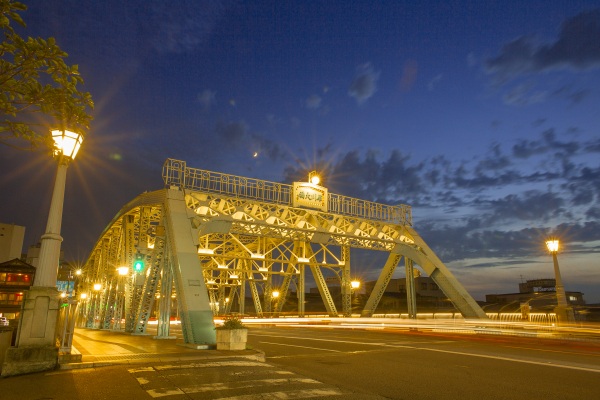Recommended Night Walking Course
Do you know that Kanazawa has a beautiful nightscape? In fact, there is even an ordinance in place to create a serene nightscape that is uniquely Kanazawa. In order for visitors to enjoy the night view, a light-up bus service is available mainly on Saturdays. If you take a tour of the city in a moderately dark, but not too bright, atmosphere, you will see a completely different scenery from that of the daytime. If you come to Kanazawa, please stay overnight and enjoy the night view.
*Light up can be enjoyed all year round, but the hours are mostly from sunset to 9 or 10 p.m.
For access to Kanazawa from Tokyo, Osaka, Kyoto, Takayama, and Shirakawa-go, please click below.
Getting to Kanazawa: https://visitkanazawa.jp/en/getting-to-kanazawa
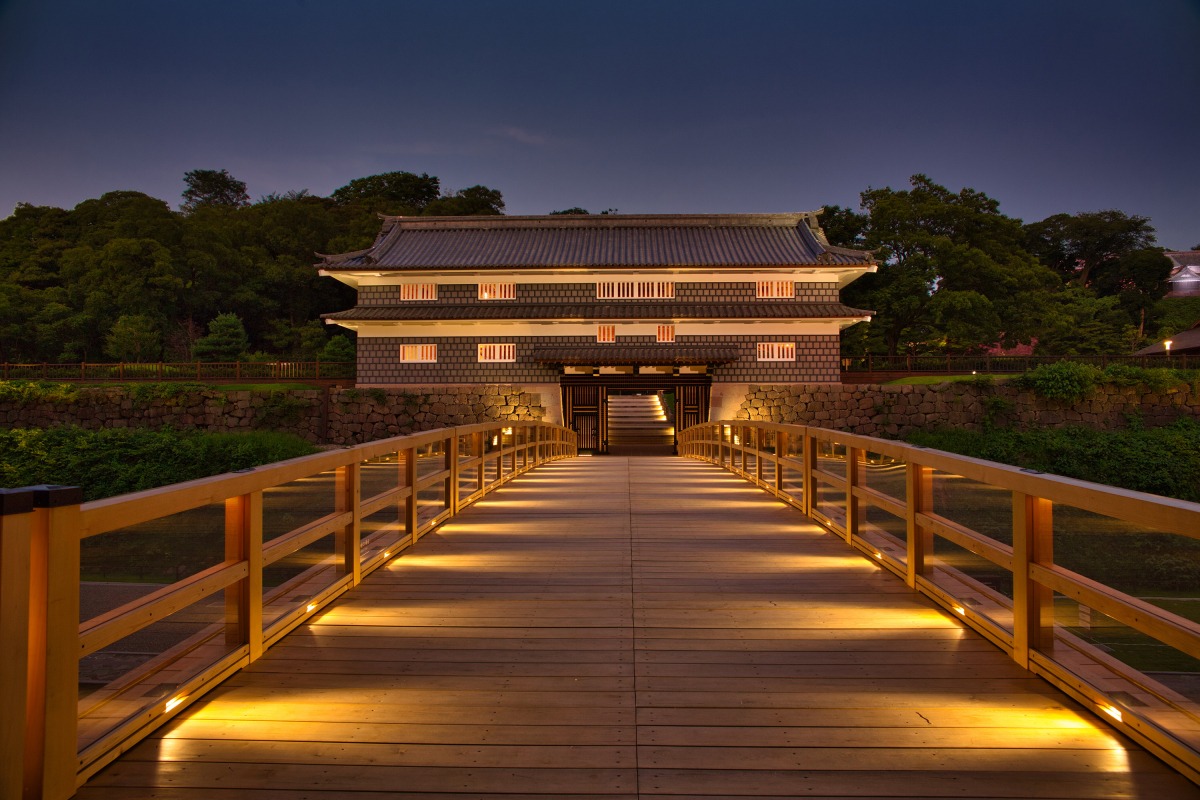
Kanazawa Station
The "Motenashi Dome" at the Kenrokuen exit of Kanazawa Station was designed with the concept of "hospitality," symbolizing offering an umbrella to travelers arriving at the station in a region known for its frequent rain and snow. Visitors are welcomed by the geometric-patterned glass ceiling.
A popular photo spot is the majestic "Tsuzumi-mon" Gate, inspired by the tsuzumi drums used in Kanazawa's traditional Noh theater. Standing at 13.7 meters tall, the grand structure, supported by two sturdy pillars, is truly impressive. Many tourists stop here first to take commemorative photos. Kanazawa Station is even recognized as one of the 14 most beautiful stations in the world.
From sunset to midnight, the is "Tsuzumi-mon" Gate lluminated. Every hour, on the hour, for 2 minutes, it lights up in colors representing the five traditional Kaga colors (crimson, indigo, grass green, ocher, and ancient purple), with different colors showcased each weekday (Monday: crimson, Tuesday: indigo, Wednesday: grass green, Thursday: ocher, Friday: ancient purple). On weekends and holidays, all five colors are displayed for 2 minutes each. Be sure to visit during nighttime to enjoy the magical lighting!
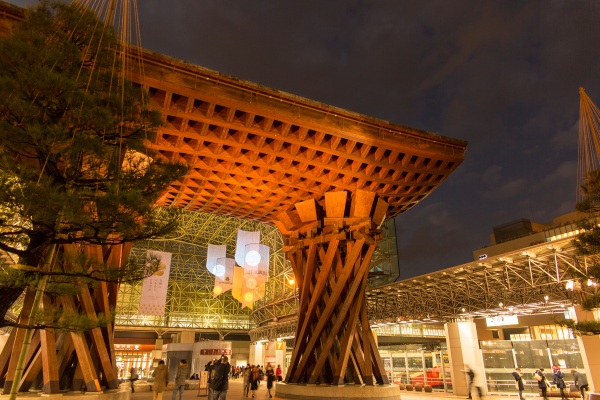
Higashi Chaya District
Discover one of Kanazawa’s largest geisha districts
In Japanese culture, geisha houses have been traditional places for feasts and entertainment since the Edo period. Also referred to as “chaya”, they are where geishas entertained wealthy nobility and rich merchants. Geishas are female Japanese entertainers who perform dances and play traditional Japanese instruments.
The central part of Kanazawa was once dotted with a number of geisha houses, but in 1820, these were moved to three specific districts away from the city centre. The largest one of these – and arguably the most famous – is the Higashi Chaya district.
The geisha houses in Higashi Chaya have a stunning traditional appearance. A geisha house is characterised by the beautiful lattice on the outer side of its first floor, called “kimusuko”, and the Japanese-style guestrooms located on the second floor. During the Edo period, the construction of two-story buildings except geisha houses was prohibited, making their appearance all the more striking.
These historical geisha houses along with Kyoto's Gion and Kanazawa's Kazue-machi have been designated as Japanese cultural assets. No other geisha districts have been designated as cultural assets for Japan, making Higashi Chaya even more special.
The district includes facilities where you can see the interior of a geisha house that was built almost 200 years ago, as well as quite a few old buildings have been refurbished into restaurants, cafes, and souvenir shops. Additionally, it takes a mere three minutes on foot to reach the banks of the Asano River from Higashi Chaya, making it an excellent area to explore afterwards.
The Kanazawa City Tourism Association holds a geisha performance show in the three geisha districts of the city on designated Saturdays, so make sure you plan your visit accordingly.
Click here for stores in Higashi Chaya District where you can use the special Gourmet Ticket Kanazawa Bimi.
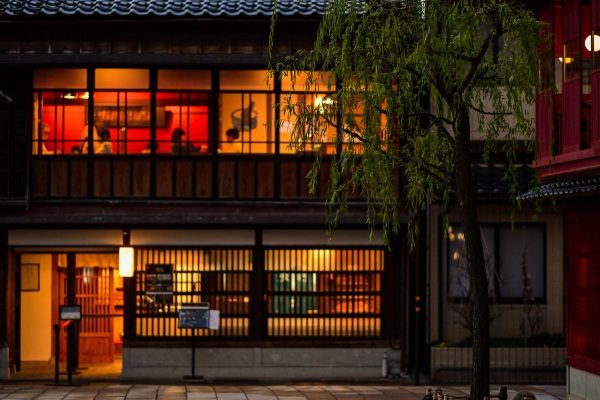
Asanogawa River
Ume-no Hashi Bridge to Asanogawa Ohashi Bridge
The Asanogawa River is one of the two rivers that flow through the central part of Kanazawa, and is also called "Onna (feminine) River." The Asanogawa River flows gently in feminine tenderness. The areas from the Ume-no Hashi Bridge, which is close to the Higashi Chaya district, to Kazue-machi through the Asanogawa Ohashi Bridge are surrounded by the unique atmosphere of Kanazawa and recommended for strolling.
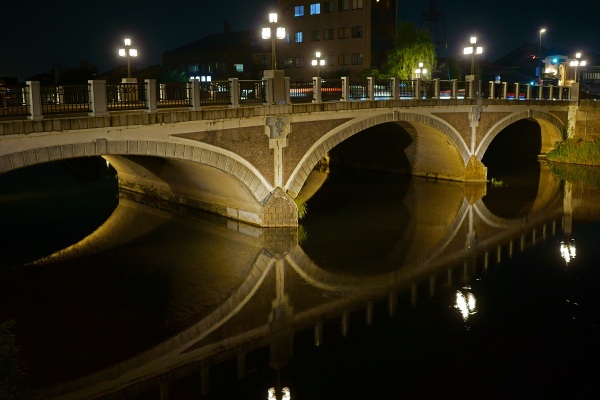
Oyama Jinja Shrine
The "Shinmon" gate, which shows the Guillaman, is stunningly beautiful!
The shrine that enshrines Maeda Toshiie was moved to the present location in 1873. The main gate is a peculiar mix of traditional Japanese, Chinese, and European religious architectural elements. This gate, which was designated as Japan's important cultural assets, was completed in 1875.
One of the highlights of Oyama Shrine is the garden in round-the-pond style with an artificial island and bridge in the images of old musical instruments, such as the biwa (Japanese short-necked fretted lute).
It is illuminated from after sunset until 22:00 at night, and the way it floats in the light creates a fantastic atmosphere. Located between Kenrokuen Garden and Kanazawa Castle and the Nagamachi District and downtown area, it is an easy stopover during sightseeing.
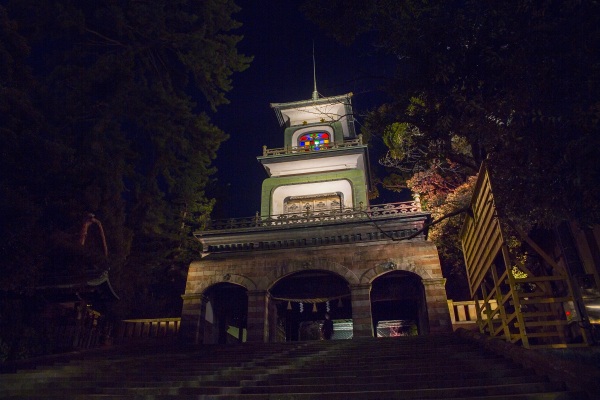
Nezumitamon Gate & Nezumitamon Bridge
Gate and bridge reconstructed after 140 years
Connecting Oyama Jinja Shrine and Kanazawa Castle is the Nezumitamon Gate which opened its doors in 2020. The history of this bridge dates back to the early 17th century. In 2015 the reconstruction of Nezumitamon Bridge and Gate was confirmed in the Third Kanazawa Castle Park Development Project. In 1877 the Nezumitamon Bridge was demolished due to age and wear, and in 1884, a fire destroyed the gate. Both were reconstructed using historical records and today we can enjoy the beauty of the gate as it was 400 years ago.
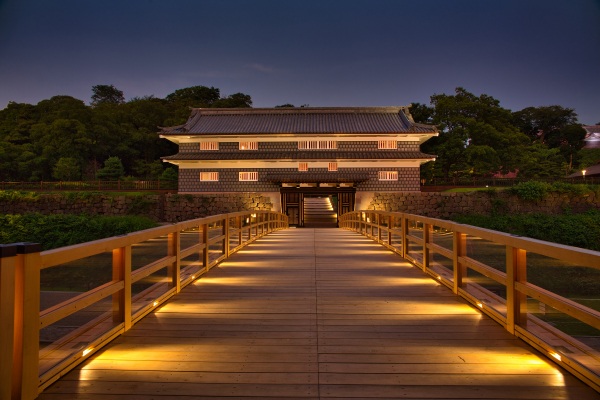
Kanazawa Castle Park
One of Kanazawa’s key historic landmarks
Once the home of the Maeda family, who governed the Kaga Domain – present day Ishikawa and Toyama – for over 280 years, Kanazawa Castle is an essential part of the city’s history.
Many features of the castle including the original castle tower were destroyed in two major fires over its long history, and many of them have been rebuilt. Two of its longest lasting features are the Ishikawa-mon Gate, which was rebuilt in 1788, and the Sanjikken Nagaya which was rebuilt in 1858. Both of them have been designated as important cultural assets.
During the time of the Maeda family, Kanazawa Castle was surrounded by moats and had a fort function with loopholes for matchlocks on the outer wall in order to keep it secure from enemies. The beautiful white tiles that grace the roof are weathered lead and the walls made of white mortar with flat tiles attached to it. The stone walls vary in type throughout the castle and it is apparent that many of them were built in separate periods, with the oldest dating back more than 400 years ago.
Prior to Kanazawa Castle and its park’s restoration, it was used for many different purposes. For a time, it was used as base for the Japanese army and then a campus for Kanazawa University before being designated a National Historic Site in 2008.
Hishi Yagura, Gojikken Nagaya, and Hashizume-mon Tsuzuki Yagura (turret and storehouse)
These three stunning features are reproductions of original aspects of the park from over 125 years ago. Hishiyagura is a diamond-shaped turret, Gojikken Nagaya a 90-yard-long warehouse, and Hashizumemon Tsuzuki Yagura a turret designed to protect a nearby gate. Constructed through traditional methods, they offer a glimpse into Kanazawa’s past.
Gyokusen-inmaru Garden
In 1634, the third lord of the Maeda family started to construct the garden. Although it was destroyed at the end of the feudal period, the garden was reconstructed in 2015. If you visit the garden after sunset on Saturdays and designated dates, you can enjoy a captivating lights show.
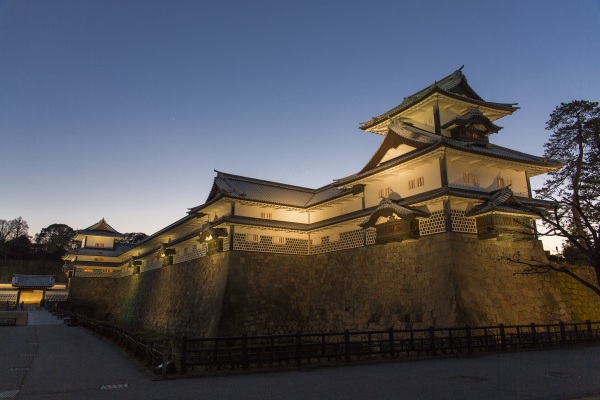
National Crafts Museum
Digging Deeper into Kogei
The National Crafts Museum is the only national museum specializing in crafts and the first national museum located on the Sea of Japan side of the country, but there is little wonder how it came to Kanazawa. Kanazawa has a long history of supporting the arts dating back to the ruling Maeda family’s patronage of the arts and culture starting over 400 years ago. Since then, the city has thrived as a center for Kogei, or traditional Japanese Crafts. Kanazawa is known as the “City of Crafts.” In fact, in 2009, UNESCO designated Kanazawa as a city of Crafts and Folk Art in its Creative Cities Network which eventually led to the relocation of the museum from Tokyo in 2020.
Housed in two historic Meiji-era (1868-1912) buildings formerly used by the military and restored with their original exteriors, the National Crafts Museum holds more than 4,000 craft and graphic design artworks primarily originating from the 20th century and is home to the finest examples of Japanese traditional crafts in the nation, including many pieces created by Japan’s Living National Treasures, the designation for master craftsmen of a specific traditional art or craft. The National Crafts Museum is located near Kenrokuen Garden, in an area that is home to several of Kanazawa’s museums.
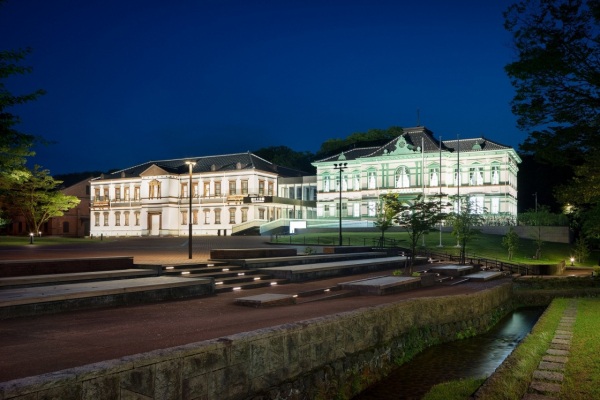
21st Century Museum of Contemporary Art, Kanazawa
A hub for contemporary art in Kanazawa
Opened in 2004, the 21st Century Museum of Contemporary Art in Kanazawa stands out compared to more traditional art museums. The museum features a captivating disc-like design, as if it were a UFO touching down in the middle of Kanazawa. All the walls are made of glass and the building features five gates, all pointing towards different parts of the city.
The museum exhibits experimental contemporary art that visitors can touch or sit on and is perfect for children and adults alike. Some of museum’s highlights include commissioned works, which are integrated into the building’s unique design.
The 21st Century Museum of Contemporary Art excels at offering visitors unique experiences that can’t be found anywhere else. Highlights include Leandro Erlich's The Swimming Pool, which enables visitors to feel as if they’re standing at the bottom of a swimming pool, and a wall decorated with flowers gathered from the suburbs of Kanazawa.
Additionally, the museum's shop offers a wide variety of products, such as museum memorabilia, accessories, and selected goods.
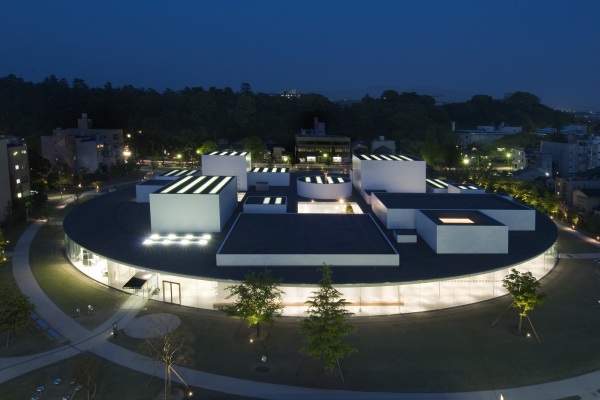
Shiinoki Cultural Complex
The Shiinoki Cultural Complex, Ishikawa Prefecture, was a part of the previous prefectural government building (constructed in 1924). The front side of the Shiinoki Cultural Complex maintains the original bricks, and the opposite side provides a modern space with glass windows. The facilities harmonized with two acorn trees (estimated to be 300 years old) incorporate an interactive space including a tourist information desk, restaurant and cafe, conference room, and galleries. *English is spoken at the tourist information desk.
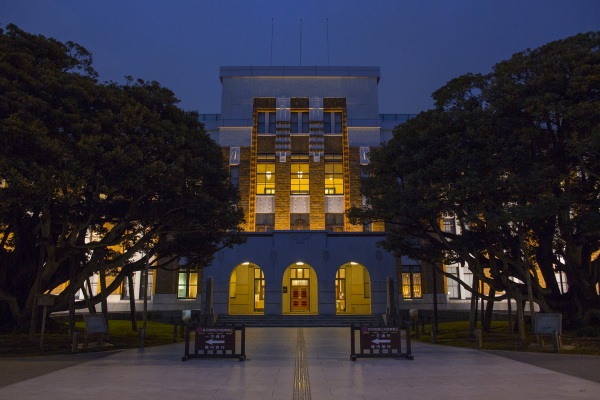
Ishikawa Four High School Memorial Cultural Exchange Center
The Ishikawa Four High School Memorial Cultural Exchange Center, located in the Ishikawa Four High School Memorial Park, is a modern red brick building that was formerly the school building of the former Four High School (called "Shiko").
In addition to exhibits that convey the history and traditions of Shiko, the museum is composed of the Ishikawa Shiko Memorial Hall, a multi-purpose classroom of the former Shiko, and the Ishikawa Museum of Modern Literature, which exhibits materials of literary figures associated with Ishikawa Prefecture.
The museum was reborn in April 2008 as a new "cultural space for learning and interaction" in the Kenrokuen Cultural Forest around Kenrokuen Garden.
Retro Museum Shop "GATE4": The former gatehouse located near the main entrance has been reborn as a museum store. Inside the store, which has been restored to its original appearance, you will find original goods related to Shiko and retro-designed items that evoke the culture and atmosphere of the Meiji and Taisho periods.
Business hours: 9:00 - 17:00 Closed: Year-end and New Year holidays, and holidays of the Ishikawa Shiko Memorial Cultural Exchange Center
Retro Costume Experience Room "Retrism": A room in the main building of Shiko has been renovated and a rental costume store with a Meiji-Taisho Romantic theme will be open from September 30, 2023. How about experiencing a different kind of kimono experience with authentic retro kimono and hakama styles in the heart of Kanazawa, a city with a concentration of green natural spaces and historical buildings?
Business hours: 9:00-17:00 Closed: Wednesdays, year-end and New Year holidays, and holidays of the Ishikawa Shiko Memorial Cultural Exchange Center
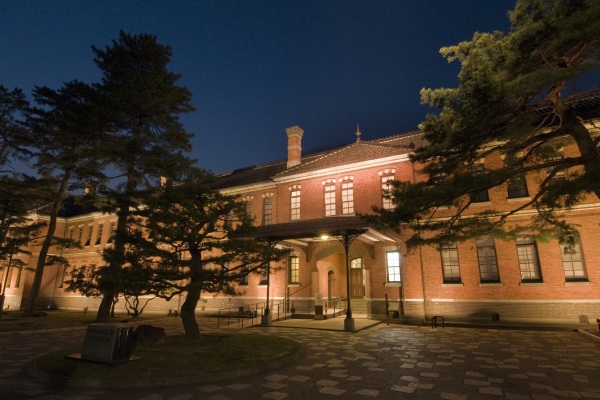
Nagamachi District
A stunningly preserved samurai district in the center of Kanazawa
Kanazawa was once the economic and administrative center of the Kaga Domain (feudal-era Ishikawa Prefecture). Over the course of the Edo period, it grew rapidly – its population growing to over 100,000 – transforming it into one of the largest castle towns in feudal Japan. Its population rivaled that of Rome and Madrid at the time.
With the castle at its center, the town was designed with both its defensive and economic aspects in mind. Members of the upper classes were often given allotments of land for their residences close to that of the feudal lord (daimyo) in the castle, while commoners lived near the town’s edges.
Nagamachi Samurai District, located near the center of town, was where the middle to high-ranking samurais lived – which is why it’s sometimes described as the city’s samurai district. Nagamachi literally means “Long Town,” though it’s more likely that it actually takes its name from the surname of a local family, the Cho, which means “long” which can also be pronounced “naga.”
Nagamachi Samurai District’s historical value lies in its unusual state of preservation. It has escaped large-scale fires, including the firebombing that damaged other large cities such as Tokyo and Osaka during World War II. Accordingly, it retains many features from the Edo period: narrow streets, a drainage and water supply system that remains in use, and restored samurai houses.
Many of these residences maintain their original earthen walls (tsuchi-kabe), which are still covered in the winter with straw mats to protect them from frost and subsequent cracking. A walk through Nagamachi, where an Edo-period atmosphere still lingers, offers a glimpse into the heritage of Kanazawa and Japan.
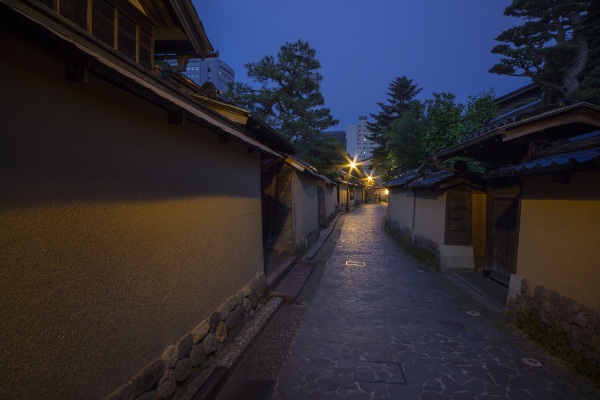
Nishi Chaya District
One of the Three Chaya Districts of Kanazawa
The Nishi Chaya District is one of the three geisha (traditional female Japanese entertainers) districts of Kanazawa, and located 500 m away from the Saigawa Ohashi Bridge in the central part of the city. Chaya is a traditional place of feasts and entertainment. You can find a number of two-story wooden chaya houses along the main street. At the time of twilight, you may hear the sound of the shamisen (a three-stringed musical instrument) and strongly feel the atmosphere of the Kanazawa-like chaya machi.
The Kanazawa Nishi Chaya Shiryokan Museum is a building reproducing a chaya house, where you can see the guest room of the chaya house.
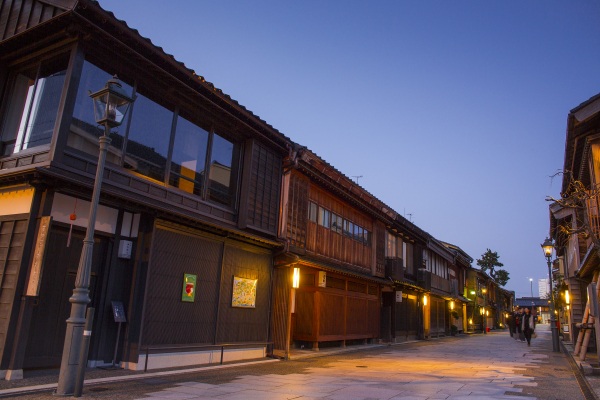
Saigawa River
A place of rest and relaxation that enriches the city center
The Saigawa River flows gently along the west side of Kanazawa Castle. Both banks of the river are lined with promenades, providing a place of relaxation for many citizens and tourists. The riverbanks are covered with green grass and are a good place for strolling and jogging. In spring, the rows of cherry trees along the riverside are crowded with people enjoying cherry blossom viewing when they are in full bloom. The river is known as the river that Saisei Muroo loved so much that he wrote in one of his poems, “Beautiful river flows by. The Asano River is called the “Otoko River” in contrast to the Onna River, which is called the “Onna River.
